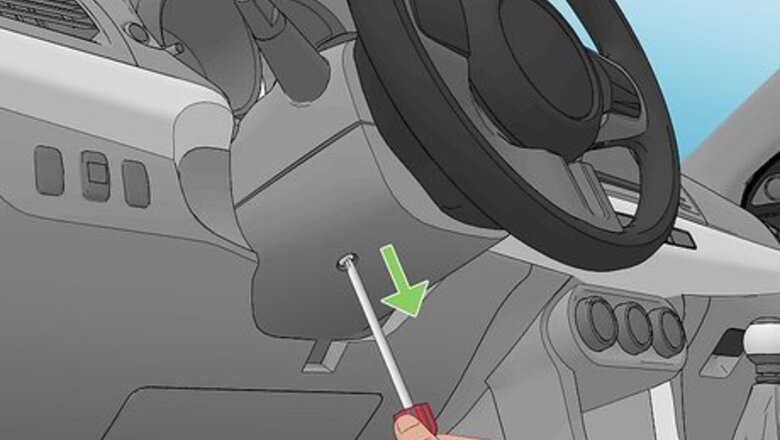
views
- Use a multimeter to test the starter’s solenoid and the battery connection.
- Inspect the fuse connected to your ignition switch to ensure that the ignition relay isn’t busted.
- Try starting the car with your spare key and jumping the battery to rule out the obvious culprits.
Multimeter Testing
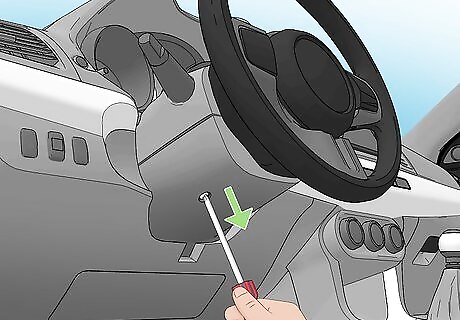
Remove the steering wheel cover to expose the ignition. This process is unique to your vehicle’s make and model, so refer to your instruction manual for help. Typically, you’ll use a flathead screwdriver or pry bar to gently force several panels open around the wheel. Sometimes, you’ll need to remove screws, first. Jot down the order you remove the panels so you can reassemble everything in the opposite order when you’re done. Some dashboard panels have clips that you have to depress or tabs that you press on to release them.
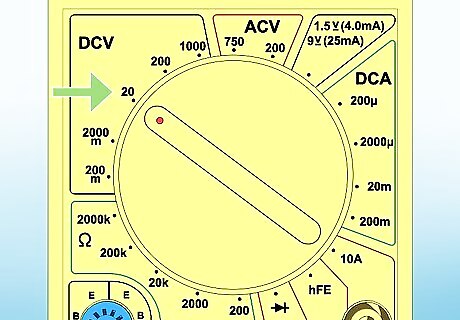
Set the multimeter to the 20 DC voltage setting. Turn the dial to the “V” or “Ω” to set the multimeter to the voltage configuration. Most vehicles have a 12-volt battery. The 20-volt setting is the closest you can normally get to the 12-volt range. Plug the black probe into the black port labelled “negative” and the red probe into the red port labelled “positive.”
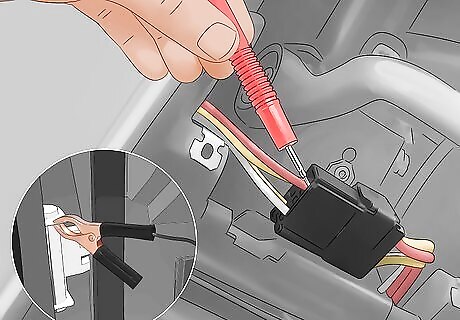
Position the red probe on your ignition switch. Put the black probe on any exposed, unpainted metal surface in your vehicle. Then, look for a gold or silver terminal on the side of your ignition module. Hold the positive probe against the terminal to test the ignition switch. There are usually 2 terminals (B and S). One is for your battery and the other is for your ignition switch solenoid. Test both. You probably won’t get a reading from one of them. Some ignition switches have 5 terminals. On these switches, test the B and L terminals in the run position, the B and S in the start position, and the G, M, and L terminals in the off position.
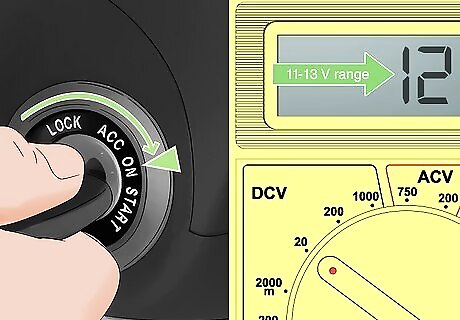
Turn the key to the on position and check the voltage. Any reading around the 11- to 13-volt range indicates that your ignition switch is working perfectly fine, which means the problem is elsewhere. If you get a really low reading or nothing and you know the battery is working, it’s time to replace the ignition switch. If you don’t get a reading on any of the terminals but you can still start the vehicle, your multimeter isn’t configured correctly or you’re testing the wrong part of your starter. Take your vehicle to a mechanic to get the ignition switch replaced.
Fuse Check

Locate and open the fuse box. The fuse box is usually located under the hood of your vehicle near the steering wheel. In some vehicles, the fuse box is located in the glovebox. You may need to refer to your vehicle’s manual to find your fuse box. Pop the hood and remove the cover of the fuse box. Here, you’re going to check the fuse for your ignition switch relay. The relay is responsible for regulating the electricity running from your battery to the ignition, so if it isn’t working properly, it can cause ignition issues.
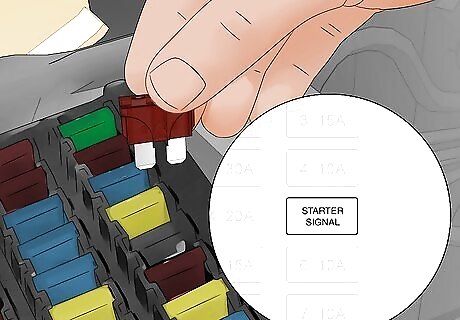
Remove the starter signal fuse from its port. If the fuses aren’t labelled, refer to an instruction manual for your make and model to find which fuse is connected to the ignition switch. With the vehicle off, physically remove the fuse from its port. It should pop right out, but you may need to jiggle the fuse a bit to completely remove it.

Inspect the metal strip on the fuse to see if it’s damaged. Look inside the fuse at the little piece of metal. If it is visibly burnt up and damaged, the fuse needs to be replaced. If it looks okay, test the pins with a multimeter. If you get a resistance of 50-120 ohms (Ω), the fuse is fine. If it’s too low or high, the ignition relay fuse needs to be replaced. You can also test the ignition relay by swapping the fuse out for a fuse that you know is undamaged and then starting the vehicle. If the vehicle starts, your old fuse was bad. To replace the fuse, purchase a replacement for your specific make and model. It shouldn’t be more than $5-10 online.
Symptoms of a Bad Ignition Switch
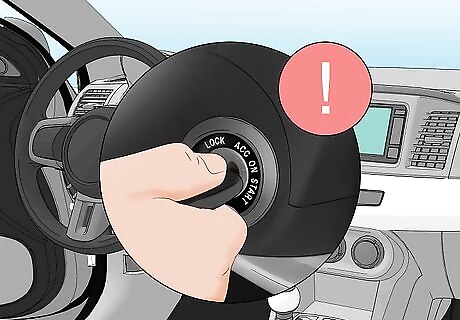
You can’t turn the key or nothing happens when you do turn it. If you physically cannot turn the key, your ignition module may need to be replaced entirely. Alternatively, if you can turn the key but the engine doesn’t do anything, that’s a sign the relay or the switch need to be replaced. If you can get the car running, your vehicle may randomly stall while you’re driving. If you hear a clicking sound when you crank the engine but nothing else, it’s a sign your starter solenoid specifically needs to be replaced.

The key feels loose or “off” inside the ignition. Your key should fit tightly inside of the ignition. If it feels loose or like there isn’t anything holding the key in place, either your ignition switch is damaged or you need to replace your key.
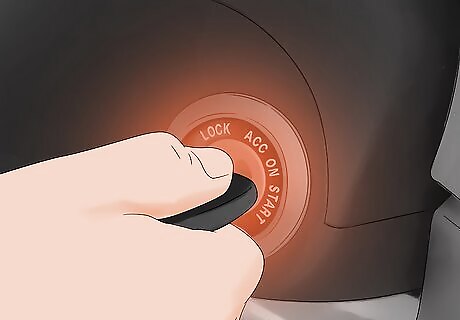
The ignition cylinder feels hot. When your car has been running for a few minutes, it’s normal for your key to get a little warm. The ignition module itself shouldn’t get hot to the touch, though. If the area around the key is scalding hot, it’s a sign the electrical components in the switch aren’t working properly. It’s especially common for Hondas, KIAs, and other foreign cars to leave your key a little warm. It still shouldn’t be burning hot, though. The problem here might be the solenoid on your ignition switch.

Your electronics won’t turn on or function correctly. If your dash lights up like a Christmas tree when you turn the vehicle on or your “accessory” position isn’t turning any electronics on, your ignition switch may need to be replaced. The switch basically tells your vehicle’s battery “the vehicle needs power” so if it’s going bad, your electronics may now work correctly.
Troubleshooting Other Problems
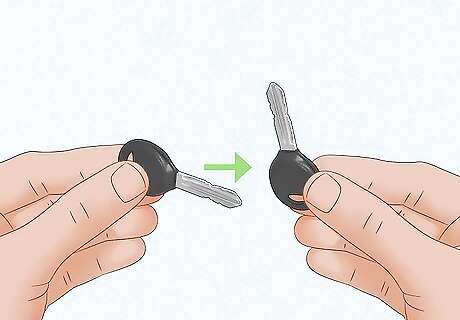
Try your spare key to confirm the key isn’t to blame. It’s possible that your ignition switch and starter are totally fine and your key simply isn’t working correctly. The metal ridges may have been worn down a bit and don’t fit the ignition anymore. Alternatively, the anti-theft electronic component may have died or been damaged and now it’s keeping the vehicle from starting. Test a spare key to confirm this isn’t the problem. If the key does turn out to be the issue, go to a dealership and have them cut a new key for you. Do you notice any tiny shards of metal near your ignition? If so, your key is getting worn down
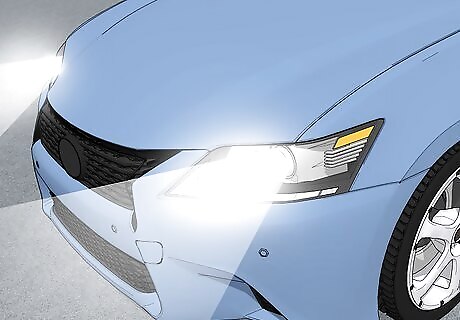
Try turning the headlights on to confirm battery issues. It happens to the best of us—you forget to shut off an interior light or turn the headlights off and you accidentally drain your battery. Before you start disassembling your dashboard or breaking out the fancy electrical testing gear, try turning the key to the accessory position and flipping the headlights on. If the dash lights and headlights come on, it’s not your battery. If you want to be totally sure the battery isn’t to blame, try jumping the vehicle to see if it starts. You can also test the battery terminals with a multimeter if you want to check it that way.




















Comments
0 comment